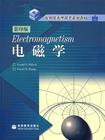电磁学
2005-5
高等教育出版社
Gerald L Pollack
620
600000
无
This is an intermediate-level textbook on electricity and magnetism. It is intended to be used for a two- or one-semester course for students of physics, engineering, mathematics, and other sciences, who have already had a one-year introductory physics course with calculus. The book is flexible enough to be used in several ways: (1) The traditional two-semester course would cover electrostatics and magnetostatics in the first semester using Chapters 1-8; and then magnetic materials and time-dependent fields in the second semester using Chapters 9-15. (2) An instructor teaching a one-semester course could cover all the basic principles of electromagnetism by using Chapters 1-3 and 6-11; there might also be time for a few examples from Chapters 4 and 5. (3) An interesting alternative approach in a two-semester course would be to go over the basic principles of Chapters 1-3 and 6-11 in the first semester, and then applications and advanced topics in the second semester based on Chapters 4,5,and 12-15. The total material in the book is more than could be realistically covered by any instructor, even in two semesters. Instructors are encouraged to pick and choose based on their own judgment of what is important. Electricity and magnetism is a wonderfully interesting subject, but to students at the intermediate level its phys-ical concepts are non-intuitive, and the associated mathematical techniques are new and challenging. Therefore its important in teaching this subject to avoid the kind of heroic pace which will tire out all but the strongest students and instruc-tors. The general principle that in teaching its better to uncover a little than to cover a lot, applies to this subject of course. The order of presentation of subjects is the traditional one: electrostatics first, then magnetism, electrodynamics and Maxwells equations, relativity, and radia-tion. Chapter 2 is an introductory treatment of vector calculus, which should help students acquire the necessary mathematical armamentarium. Our experience in teaching this subject is that at the outset of the course most students do not know vector calculus well enough to study electromagnetic field theory, so its impor-tant to help them gain the necessary mastery. Chapter 2 is sophisticated in places,and it is not necessary to comprehend all of it before starting on Chapter 3; the student can return to Chapter 2 when additional mathematical skill is needed. Stu-dents might also read a specialized book on vector calculus (e.g., one of the two references at the end of Chapter 2) while studying Chapter 2.
本书是在美国大学使用比较广泛的一本为本科生编写的电磁学教材。虽然在总体上,该教材仍然是一本比较传统的教材,但作者仍然在如何能帮助学生更好的学习电磁学课程做了不少努力。例如,提供不少和实际联系比较紧密的例子,讲解详细的例题以及提供了不少使用计算机解决问题的算例。这些内容对于学生理解电磁学内容,应用所学知识都有很好的帮助。另外,该教材的习题难度适中,并有不少提示,对于巩固学习内容也有很好的帮助。 本书的难度和国内教学要求比较接近,可作为物理类专业电磁学课程的教材,尤其适合开展双语教学的学校,对于有志出国深造的人员也是一本必不可少的参考书。
作者:(美)波拉克、斯顿普
1 History and persopective 1.1 Brief History of the science of electromagnetism 1.2 Electromagnetism in the Standard model2 Vector calculus 2.1 Vector algebra 2.1.1 Definitions 2.1.2 Addition and multiplication of vectors 2.1.3 Vector product identities 2.1.4 Geometric meanings 2.2 Vector differential operators 2.2.1 Gradient of a scalar function 2.2.2 Divergence of a vector function 2.2.3 Curl of a vector function 2.2.4 Del identities 2.3 Integral theorems 2.3.1 General deriations 2.3.2 Stoke`s theorem 2.3.3 Vector calculus in fluid mechanics 2.4 Curvilinerar coordinates 2.4.1 General derivations 2.4.2 Cartesian,Cylindrical,and spherical coordinates 2.5 The Helmholtz Theorem3 Basic principles of electrostatiple 3.1 Coulomb`s Law 3.1.1 The superposition principle 3.2 The electric field 3.1.1 Definition 3.1.2 Charge as the source of 3.1.3 Field of a Charge continuum 3.3 Curl and Divergence of E 3.3.1 Field Theory versus Action at a distance 3.3.2 Boundary conditions of the electrostatic field 3.4 The integral form of Gauss`s law 3.4.1 Flux and Charge 3.4.2 Proof of gauss`s law 3.4.3 Calculations Based on gauss`s law ……4 Electrostatics and conductors5 General methods for laplace`s equation6 Electrostatics and dielectrics7 Electric currents8 Magnetostatics9 Magnetic Fields and matter10 Electromagnetic induction11 The maxwell equations12 Electromagnetism and relativity13 Electromagnetism and optics14 Wave Guides and transmission lines15 Radiation of electromagnetic wavesA Electric and magnetic unitsB The Helmholtz TheoremIndex
《电磁学》(影印版)的难度和国内教学要求比较接近,可作为物理类专业电磁学课程的教材,尤其适合开展双语教学的学校,对于有志出国深造的人员也是一本必不可少的参考书。

无
难度介于普通物理和电动力学之间,写法还比较简明
这本书有一个突出特点:将数学知识(例如拉普拉斯方程的一般性理论)穿插在了各章的物理内容之间,适合刚刚学过数分的人阅读。本书的难度大概在中国现行的电磁学和电动课程之间,词汇量也不大,跟费恩曼的书差不多。书的内容比中国所谓的“电磁学”教材要丰富,一个值得注意的特征是这本书的电动色彩多少有点重-虽然名字叫做我“Electromagnetism”。最后要吐槽一下,亚马逊的书包装的实在不咋样,书到手时已经严重变形了。
值得去看的外国教材,比中国的教材详细多了
经典。书的纸质也不错。
价格便宜,内容详实。